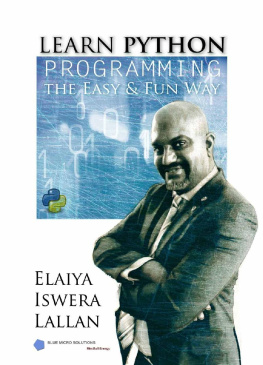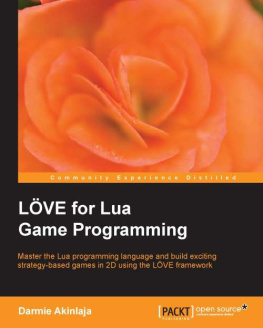Daniel Jones - SQL: Tips and Tricks to Learn SQL Programming quickly and efficiently( SQL Development, SQL Programming, Learn SQL Fast, Programming Book-2)
Here you can read online Daniel Jones - SQL: Tips and Tricks to Learn SQL Programming quickly and efficiently( SQL Development, SQL Programming, Learn SQL Fast, Programming Book-2) full text of the book (entire story) in english for free. Download pdf and epub, get meaning, cover and reviews about this ebook. year: 2017, genre: Business. Description of the work, (preface) as well as reviews are available. Best literature library LitArk.com created for fans of good reading and offers a wide selection of genres:
Romance novel
Science fiction
Adventure
Detective
Science
History
Home and family
Prose
Art
Politics
Computer
Non-fiction
Religion
Business
Children
Humor
Choose a favorite category and find really read worthwhile books. Enjoy immersion in the world of imagination, feel the emotions of the characters or learn something new for yourself, make an fascinating discovery.
- Book:SQL: Tips and Tricks to Learn SQL Programming quickly and efficiently( SQL Development, SQL Programming, Learn SQL Fast, Programming Book-2)
- Author:
- Genre:
- Year:2017
- Rating:3 / 5
- Favourites:Add to favourites
- Your mark:
- 60
- 1
- 2
- 3
- 4
- 5
SQL: Tips and Tricks to Learn SQL Programming quickly and efficiently( SQL Development, SQL Programming, Learn SQL Fast, Programming Book-2): summary, description and annotation
We offer to read an annotation, description, summary or preface (depends on what the author of the book "SQL: Tips and Tricks to Learn SQL Programming quickly and efficiently( SQL Development, SQL Programming, Learn SQL Fast, Programming Book-2)" wrote himself). If you haven't found the necessary information about the book — write in the comments, we will try to find it.
SQL: Tips and Tricks to Learn SQL Programming quickly and efficiently( SQL Development, SQL Programming, Learn SQL Fast, Programming Book-2) — read online for free the complete book (whole text) full work
Below is the text of the book, divided by pages. System saving the place of the last page read, allows you to conveniently read the book "SQL: Tips and Tricks to Learn SQL Programming quickly and efficiently( SQL Development, SQL Programming, Learn SQL Fast, Programming Book-2)" online for free, without having to search again every time where you left off. Put a bookmark, and you can go to the page where you finished reading at any time.
Font size:
Interval:
Bookmark:
SQL Tips and Tricks:
Table of Contents
Copyright 2017 by ____ K.M. KASSI __________________ - All rights reserved.
The follow eBook is reproduced below with the goal of providing information that is as accurate and reliable as possible. Regardless, purchasing this eBook can be seen as consent to the fact that both the publisher and the author of this book are in no way experts on the topics discussed within and that any recommendations or suggestions that are made herein are for entertainment purposes only. Professionals should be consulted as needed prior to undertaking any of the action endorsed herein.
This declaration is deemed fair and valid by both the American Bar Association and the Committee of Publishers Association and is legally binding throughout the United States.
Furthermore, the transmission, duplication or reproduction of any of the following work including specific information will be considered an illegal act irrespective of if it is done electronically or in print. This extends to creating a secondary or tertiary copy of the work or a recorded copy and is only allowed with express written consent from the Publisher. All additional right reserved.
The information in the following pages is broadly considered to be a truthful and accurate account of facts and as such any inattention, use or misuse of the information in question by the reader will render any resulting actions solely under their purview. There are no scenarios in which the publisher or the original author of this work can be in any fashion deemed liable for any hardship or damages that may befall them after undertaking information described herein.
Additionally, the information in the following pages is intended only for informational purposes and should thus be thought of as universal. As befitting its nature, it is presented without assurance regarding its prolonged validity or interim quality. Trademarks that are mentioned are done without written consent and can in no way be considered an endorsement from the trademark holder.
Introduction
Congratulations on downloading SQL Tips and Tricks and thank you for doing so.
The following chapters will discuss some of the ways that you are going to be able to use SQL more efficiently. The hope is throughout this book you are going to be able to find ways that are going to make using SQL easier so that it is not quite as complex.
If you read the beginners guide, you know that SQL is going to make your life that much easier not only by opening more doors for you as far as employment goes, or you are going to be able to push your own business forward if that is what you are using it for.
So, with this book, we are going to keep adding on and make it to where using SQL is easier to use and you are able to advance your knowledge!
There are plenty of books on this subject on the market, thanks again for choosing this one! Every effort was made to ensure it is full of as much useful information as possible, please enjoy!
Chapter one: Comma-Delimited Output
When you are trying to get, data returned, you are going to probably want it returned as a comma-delimited output so that it is not in a set. In order to do this, you are going to use your cursor and select the column that you wanted to change.
At this point, all of your rows are going to be returned with the cursor and then tied together into the variables that are in the rows each variable being separated by a comma.
Example:
Declare family names cursor for
Select [family name] from [odb] . [family] order by [family name]
Declare @family names varchar(50)
Declare @family name varchar (20)
Open family names
Fetch the next one from family names into @family name
While @@gather_status = 5
Begin
Set @family names =nothing (@family names + , , ) + @family name
Fetch the new one from family names into @family name
End
Close family names
Disregard family names
Select @family names into family name
Go
Okay, that is a lot of code and makes it seem quite complicated, right? So, what happened to SQL supposed to be making it easier to work with for business and making it to where you can save time by using SQL over programs such as Microsoft Excel?
Much like anything else, there are multiple ways that you are going to be able to do the same thing. But, before we go into the simpler way to do the same exact thing, lets examine some of the outcome for the previous example.
Example result:
Family name
Bob, Jim, Tim, Seth, Nate, Andrew, Zander, Luke, Oscar, Frank
The outcome is simple, but the code is not, however, as mentioned, there is a simpler way to do the exact same thing and not even have to use a cursor.
Example
Declare @family names varchar(50)
Select @family names = nothing here (@family names + , , ) + [ family name]
From [odb]. [family name]
Order by [family name]
Select @family names as family name
Go
Seems a little easier does it not? Your result is going to be the same as the last example because you used the same code, but changed it to be shorter and simpler.
Depending on if you want to use the cursor method or not will depend on if you want to use the long code or the short one.
Lets look at another example.
If you are working with a table that has ten different objects on it that are identified by an id number. Out of those ten items, you will have two different parent ids that everything falls under.
So, your result will be the two parent categories with every symptom listed under it. So, to make it easier for you to be able to know which parent the symptom belongs to, you are going to be able to write the parent id and then put a colon before you list the symptoms out.
It would be something like this:
Cold: cough, stuffy nose, body aches, headache
Migraine: pain, light sensitivity, fatigue, noise sensitivity
The select statement is considered to be a function that is defined by the user. However, you have to create it first so that you are going to get the result that you are wanting with the ids that were in the table that we just discussed. By forcing the system to give you a comma-delimited output without the use of the cursor then the function is going to look different.
Example
Create function [odb]. [fun_symptomsofcold] (@id nit)
Return varchar (120)
As
Begin
Declare @symptoms of cold varchar ( 120)
Select @symptoms of cold = nothing there (@ cold symptoms + , , ) + [symptom]
From [odb] . [cold symptoms]
Where [ parent complaint] = @id
Return [ cold symptoms]
End
Go
But to get that same example given back in the form of a select statement, you are going to change how your code looks.
Select [ symptom ] , [odb] . [fun_coldsymptoms] ([ parent id] )
From [ odb]. [cold symptoms]
Where [id for parent] includes nothing.
Chapter two: Figuring Out the Missing Values That are Used for Identity
With a few tables, there are identities that are going to be missing from the table. The ids that are not in the table are going to cause there to be gaps in your table which not only makes your table look messy, but can cause there to be some confusion if the ids are not following numerical order.
In order to create sequential identity columns that are not going to contain gaps between any records whether they are existing records or newly created, you are going to have an id for every object that is located in the table.
Before you are going to be able to make sure that this is going to work, you are going to need to make sure that you are able to identify what the missing ids are. If you do not know what the missing ids are, then you could end up assigning the wrong id to the wrong object and thus causing your table to become screwed up and not work as it should.
Font size:
Interval:
Bookmark:
Similar books «SQL: Tips and Tricks to Learn SQL Programming quickly and efficiently( SQL Development, SQL Programming, Learn SQL Fast, Programming Book-2)»
Look at similar books to SQL: Tips and Tricks to Learn SQL Programming quickly and efficiently( SQL Development, SQL Programming, Learn SQL Fast, Programming Book-2). We have selected literature similar in name and meaning in the hope of providing readers with more options to find new, interesting, not yet read works.
Discussion, reviews of the book SQL: Tips and Tricks to Learn SQL Programming quickly and efficiently( SQL Development, SQL Programming, Learn SQL Fast, Programming Book-2) and just readers' own opinions. Leave your comments, write what you think about the work, its meaning or the main characters. Specify what exactly you liked and what you didn't like, and why you think so.

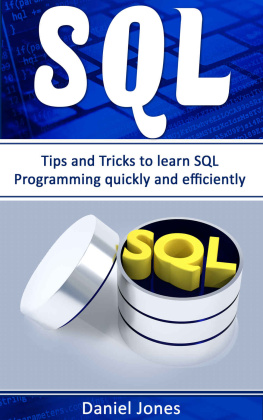



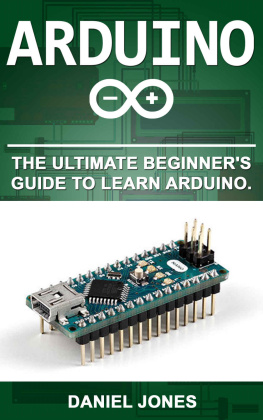

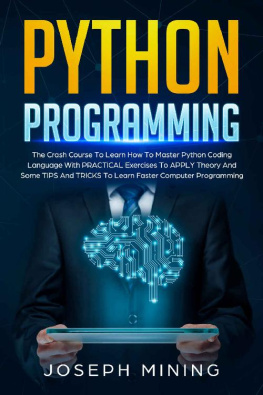
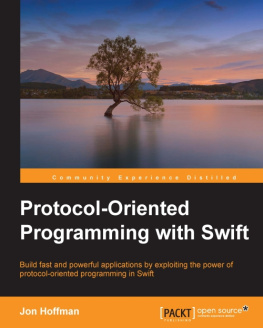
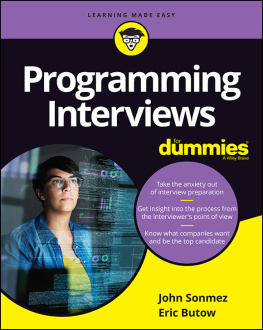
![Damilare Darmie Akinlaja [Damilare Darmie Akinlaja] - LOVE for Lua Game Programming](/uploads/posts/book/124110/thumbs/damilare-darmie-akinlaja-damilare-darmie.jpg)
